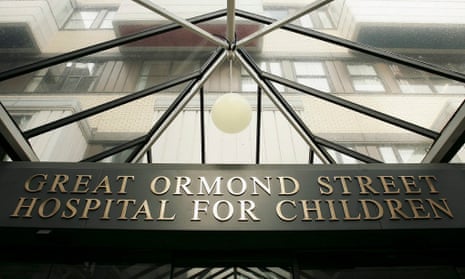Children with a devastating immune condition appear to have been cured, after becoming the first to be given a new form of gene therapy.
Without the treatment, the patients who suffer from a rare condition called Wiskott-Aldrich syndrome, faced short life expectancies and prolonged periods in hospital.
Doctors at Great Ormond Street Hospital, who led the successful trial, said the findings marked a turning point for gene therapy and could pave the way for similar techniques being used for more common conditions, including sickle cell disease and thalassaemia.
Prof Adrian Thrasher, the immunologist who led the work, said: “This is a very powerful example of how gene therapy can offer highly effective treatment for patients with complex and serious genetic disease. It also excitingly demonstrates the potential for treatment of a large number of other diseases for which existing therapies are either unsatisfactory or unavailable.”
The findings follow several other positive trial results during the past year, which scientists say are putting to rest accusations that the promise of gene therapy has been over-hyped.
Emma Morris, an immunologist at University College London who is currently leading a gene therapy trial for leukaemia, said: “People have been working on it for ten years and it’s now becoming a reality that you can safely genetically modify cells and introduce them into people.”
In the latest study, seven children with Wiskott-Aldrich syndrome (WAS) were treated at Great Ormond Street Hospital and a separate clinic in Paris.
The genetic condition affects between one and 10 children in every million worldwide and reduces their ability to fight infection. Symptoms can include bleeding episodes, eczema and other recurrent skin infections and autoimmune disease, and in severe cases children can need to spend long periods in hospital.
The condition can be treated successfully with bone marrow transplants from a healthy donor, but this relies on finding a good match for the patient. “If you don’t have a good match, the treatment is complicated and requires lots of drugs,” said Thrasher.
All the children in the trial had recurrent skin infections, most experienced severe bleeding and one of the children was confined to a wheelchair.
For the new treatment, the scientists took the children’s own bone marrow and genetically modified it using a harmless virus to introduce a working version of the faulty gene into the patient’s immune cells.
The children were also given chemotherapy, which destroys some of the body’s existing bone marrow, before the genetically modified cells were replaced.
Following the treatment, one of the children died, from pre-existing problems unrelated to the treatment. The other six children’s immune systems showed a remarkable recovery and most of their symptoms were resolved. Over a period of two years, patients went from spending an average of 25 days in hospital before the gene therapy tozero days in hospital afterwards.
Daniel Wheeler, a 15-year-old from Bristol who took part in the trial, said the treatment has transformed his health. “I’m fine. I bruise a lot less easily, I’m not on anywhere near as many medicines and I’m getting more of an education,” he said.
“We don’t like to use the word ‘cure’, but given that all these patients had severe disease and symptoms, it’s pretty much resolved in all of them,” said Thrasher.
His team are now hoping to start new trials for patients with sickle cell disease and thalassaemia, which are among the most common inherited genetic disorders in Britain.
The scientists appear to have overcome a significant problem in some previous gene therapy trials, where the inserted gene had harmful “off target” effects, including switching on cancer-promoting genes. Previously, some children given gene therapy for other immune conditions, such as SCID (bubble baby syndrome), have gone on to develop leukaemia as a side-effect of the treatment. “The problem was they tended to turn on other genes indiscriminately, including cancer genes,” said Thrasher.
The latest technique appears to have overcome this by inserting a longer piece of DNA, meaning the gene is housed in a more natural environment that appears to control its action more effectively.
The results of the trial are “very impressive”, according to Morris, who is now involved in an extension of the trial that will include adult patients for the first time. “It’s a very different way of delivering treatments to patients,” she aded. “When the problem is a cell that doesn’t work properly, gene therapy offers a form of treatment that drugs and medicine will never be able to achieve.”
The report was published today in the Journal of the American Medical Association.

Comments (…)
Sign in or create your Guardian account to join the discussion